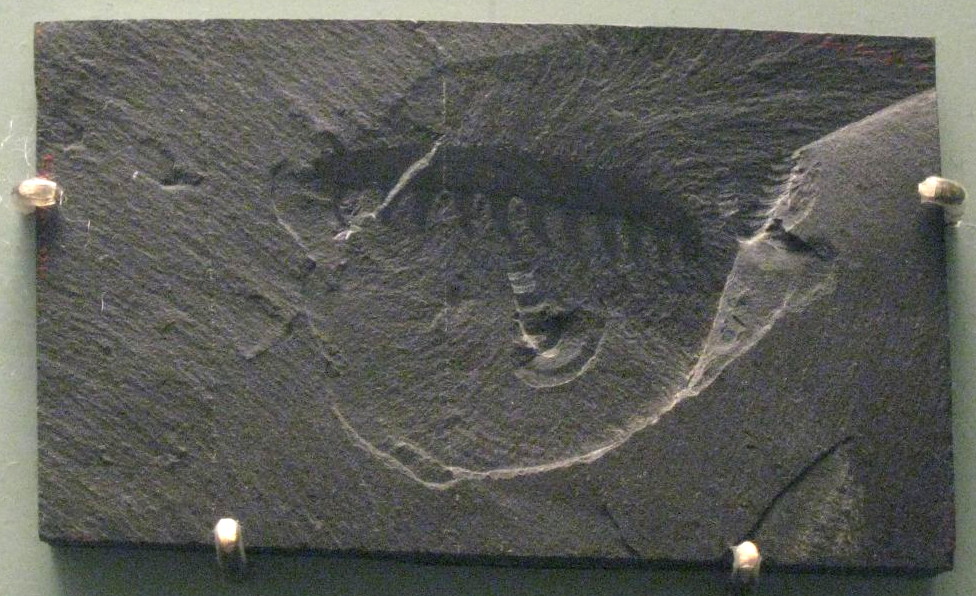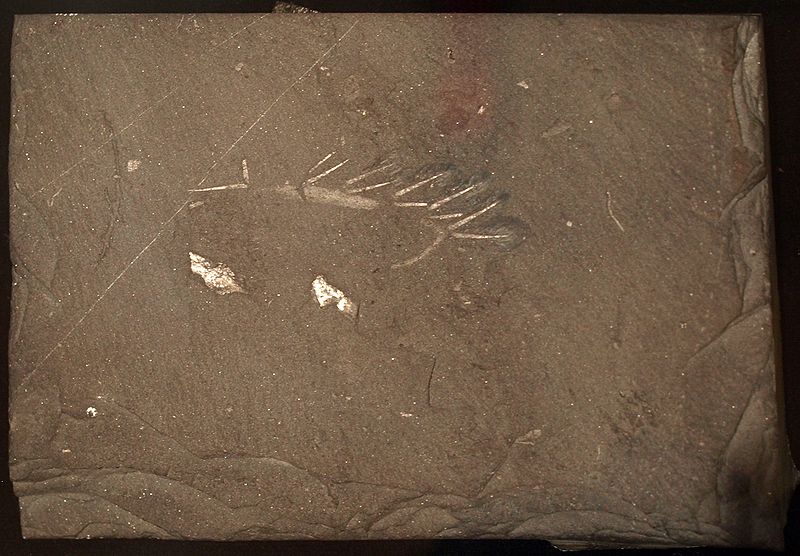The "living fossil"...
Onychophora fossils date back 500 million years ago during the explosive Early Cambrian period of evolution. These organisms were among many aquatic animals on the Cambrian sea floor to later then move to land, yet, it seems like this phylum has not undergone much evolutionary change. One famous rock formation known as the Burgess Shale of the British Columbia, Canada, preserved many organsims that lacked a hard mineralized shell at the time. The Burgess Shale makes up most fossils discovered. Among these "soft bodied" organisms were specific organisms resembling the Onychoporans. Nearly a century ago, Charles Dolittle Walcott, a palaeontologist from Smithsonian Institution in Washington, discovered a fossil called Aysheaia pedunculata (Fortey 2012). This organism displays many simular features of Onychophorans today. Shown on the right is a photograph of the fossilized Aysheaia pedunculata. Here, we can see that the appendages and body structure closely resemble the Onychophora such as the Euperipatoides rowelli.
Another fossilized organism that has been described as very simular to Onychophora is the infamous Hallucigenia. Hallucigenia was named by Cambridge palaeontologist, Simon Conway Morris in 1977. Simon Conway observed tiny needle-like spines that covered the organism and interpreted them to be legs (Fortey 2012). Until recently, Simon Conway thought that the Hallucigenia was not related to the onychophorans, instead, a bizarre organism that used the spines that covered the organism as a walking mechanism (Berekly 2014). He later acknowledged his error. Shown on the left is a fossilized Hallucigenia on display in the Royal Ontario Museum, Toronto. In this photograph, the keen-edged that Conway thought to be "legs" are very evident in the Burgess Shale.
Additional fossils resembling relatives to the onychophora phylum have been discovered in other parts of the world over the last decade. Finding in strata cropping around Chengjiang in Yunnan Province in China proved to be around 10 million years older than the fossils from British Columbia, Canda in the Burgess Shale. These new fossils from the shales of the Maotianshan Formation included at least 6 diverse organisms that could be classified as relative to the Onychophora. Due to several new fossils, the whole group both living and fossil, was named in the 1990's as the "lobopods". This was explained by the lobe-like legs on a onychophora (Fortey 2012). The Velvet Worms, though diverse, has changed very little since the Early Cambrian period, thus is why many scientists have called it the 'living fossil". These finely preserved fossils of the Burgess Shale and shale of the Maotianshan Formation such as these shown, allow for better understanding of the origin of the animal phyla.
For more information on the geography of Onychophora such as the Euperipatoides rowelli, check out the Habitat and Geography page!
To continue your research check out the Interactions page!
For further information on references used, follow the link provided.
